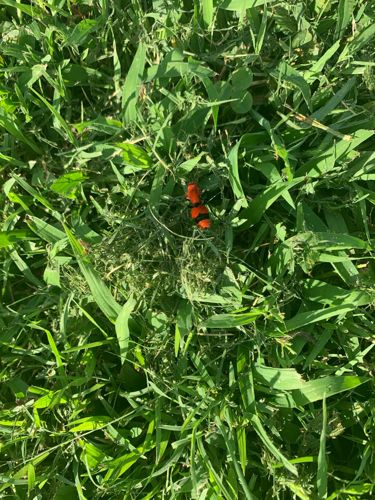Spanish Fly, Blister Beetle
Scientific Name: Lytta vesicatoria (though many blister beetles share similar appearance and characteristics)
Order & Family: Order: Coleoptera, Family: Meloidae
Size: Generally 10-25 mm (0.4-1.0 inch) in length.

Natural Habitat
Found in temperate regions, often on ash, lilac, honeysuckle, and other plants. They prefer sunny areas.
Diet & Feeding
Adults primarily feed on leaves of various plants, often from the olive family (Oleaceae) such as ash, lilac, and privet. Larvae are typically parasitic on the eggs of grasshoppers or the larvae/provisions of ground-nesting bees.
Behavior Patterns
Blister beetles are known for secreting cantharidin, a toxic chemical, as a defense mechanism when disturbed. This chemical causes blistering on the skin. They are often active during the day and can be found congregating on host plants. Their life cycle often involves hypermetamorphosis, with different larval instars having distinct forms.
Risks & Benefits
Risk: The cantharidin secreted by blister beetles can cause severe skin blistering upon contact and is highly toxic if ingested by humans or livestock, potentially leading to kidney damage or death. Benefit: Some species' larvae can be beneficial by preying on grasshopper eggs, thus helping to control grasshopper populations.
Identified on: 10/7/2025